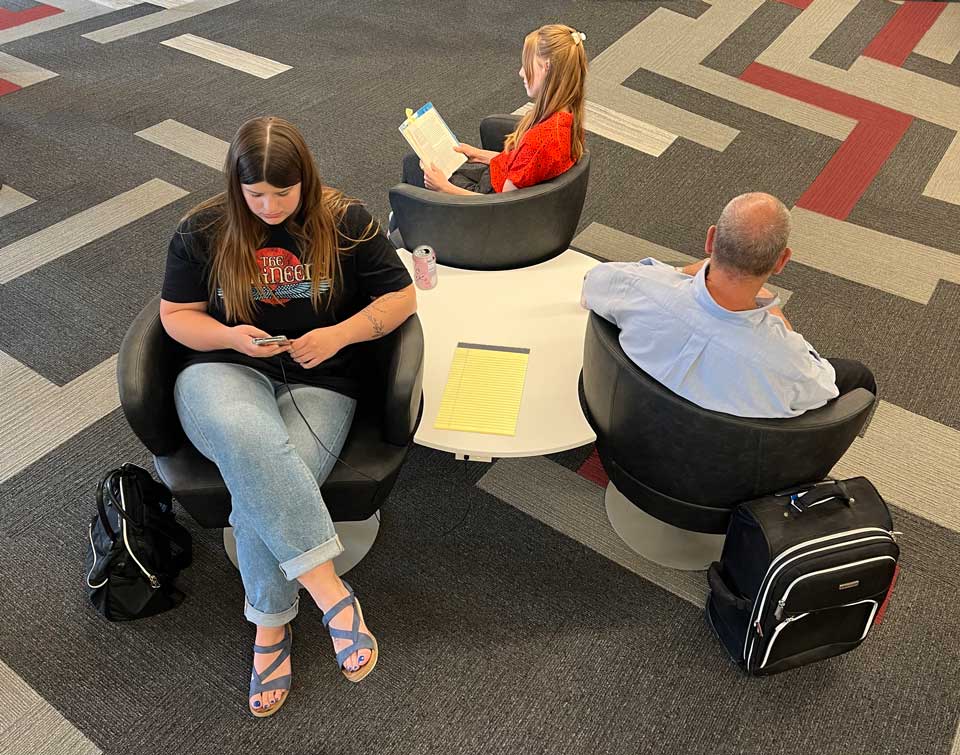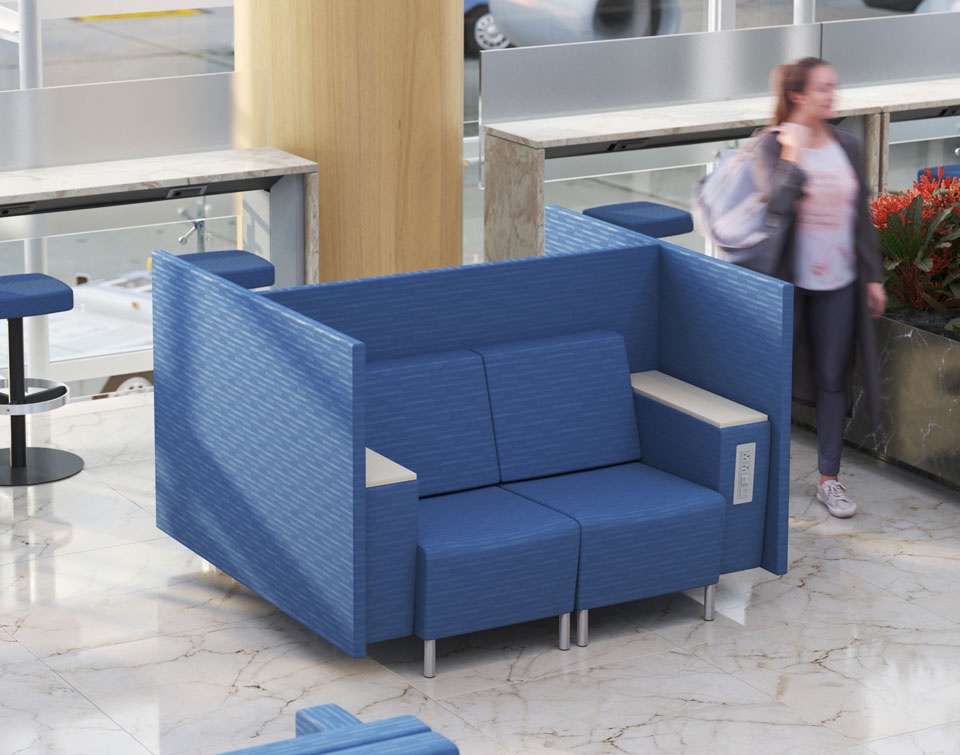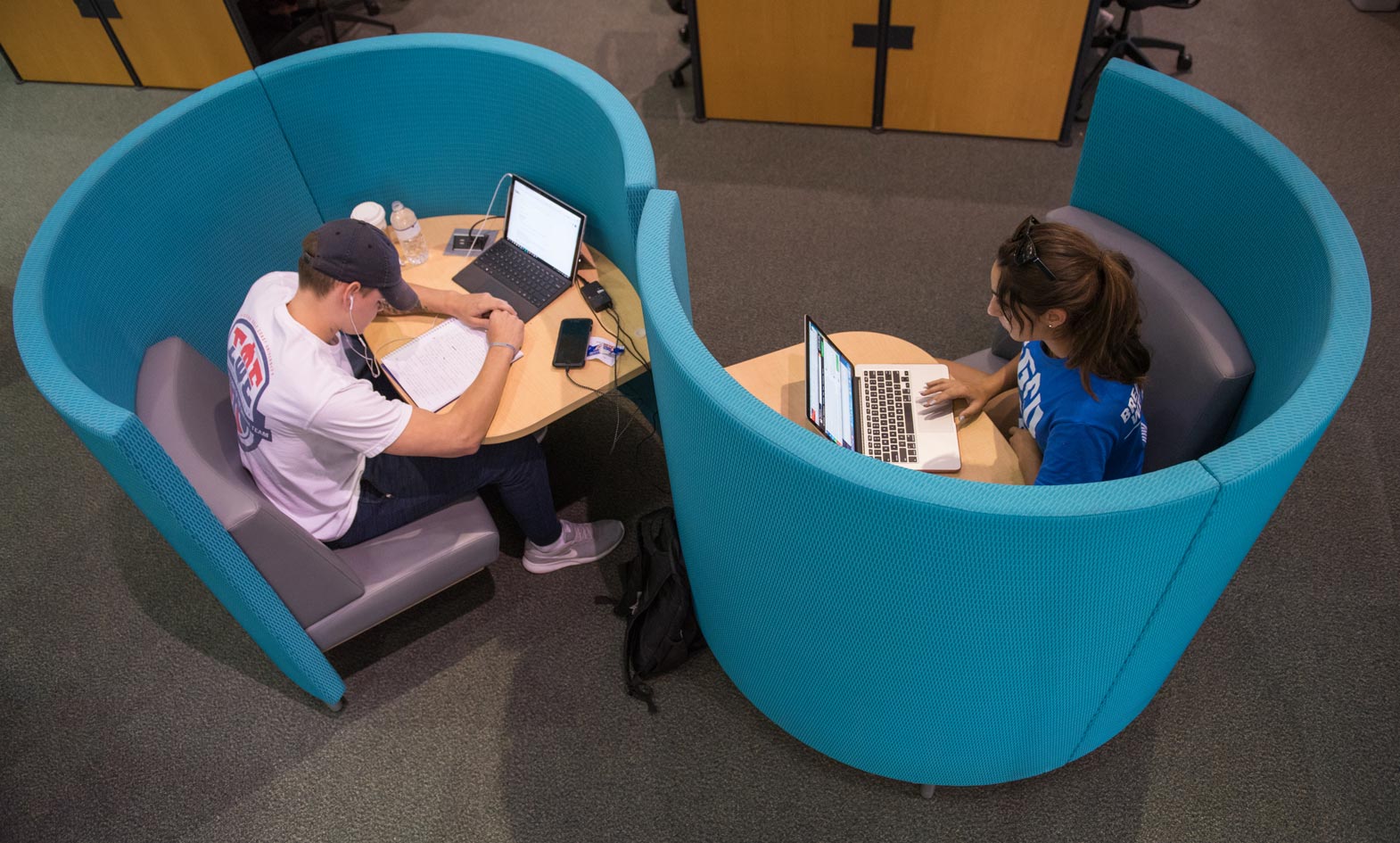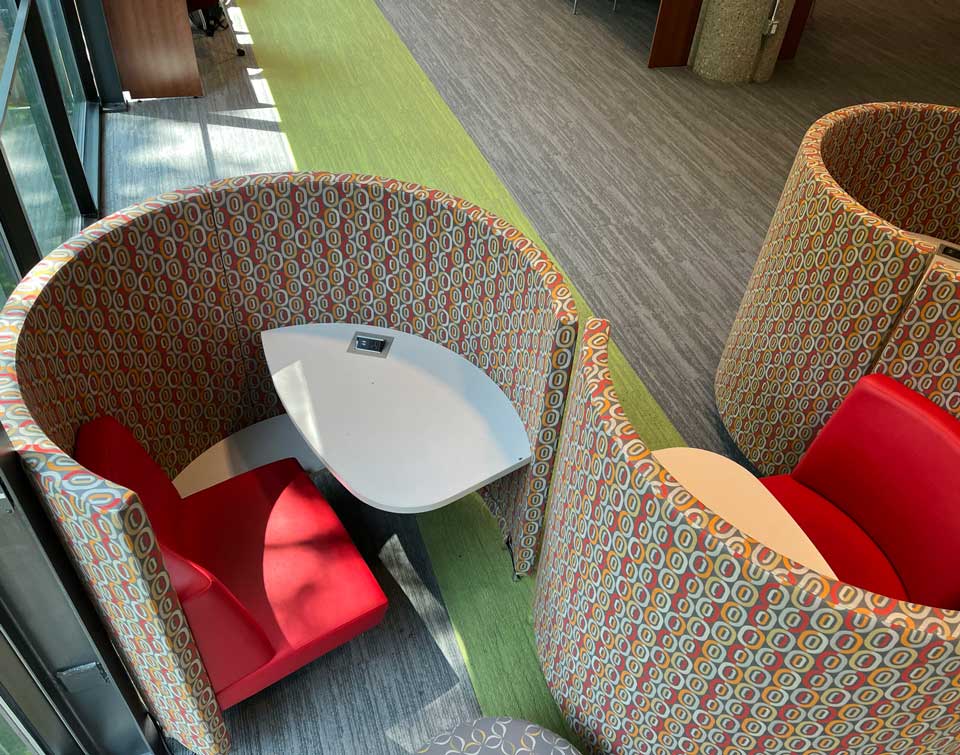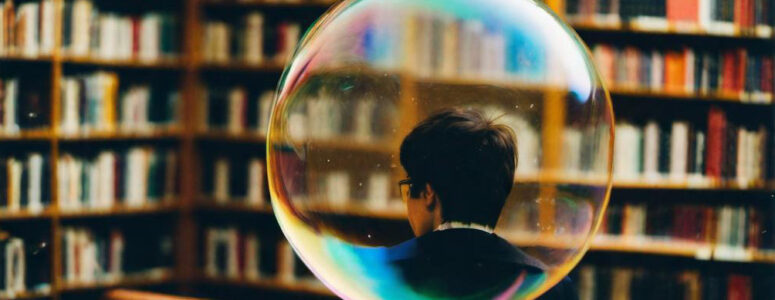
We’ve all been in a public space where a stranger was a few steps too close to us in line to get a cup of joe. The hair stands up on the back of our necks, we clutch our personal items a little bit closer, and without thinking we may keep a watchful eye on them to track their movements.
This behavior is what uniquely influences many of our decisions in public spaces like airports, universities, libraries, hospitals, etc. Our personal bubble informs where we feel the “best” seat is and helps us feel that we are an adequate distance away from others. Feeling secure in our personal space also affects how productive we can be in a space.
Personal Space is a Key to Comfort
Research has shown that humans observe four different ranges of space, beginning with intimate space (12″-18”) then going out to personal space (1’-4’) then to social space (4’-12’), and finally public space (12’+). The first two directly impact our ability to feel safe, comfortable, and relaxed when we’re around others.
Our own research has confirmed that in public spaces surrounded by strangers, your personal bubble needs are a minimum of 12 inches. As others encroach upon this 12-inch bubble, we begin to feel our stress and discomfort rise.
“As others encroach upon this 12-inch bubble, we begin to feel our stress and discomfort rise.”
This is why we often observe users placing a seat buffer between them and another person when sharing a community table at a restaurant or a large study table in a library. This can also be observed in airports where travelers will choose to sit with a seat between them and the next traveler, especially when beam seating solutions are the only option. Often this “extra” chair will be used to store personal belongings as an added buffer.
Interestingly, recent studies are also finding that our personal space may have expanded by up to 50% as a result of the COVID-19 pandemic. More research is still needed to determine the long-term effects of the pandemic on our personal space, but it’s clear that our comfort largely depends on how much personal space we have.
Space to Feel Safe
Now that we have a deeper understanding of personal space and how it impacts our comfort, we can look at what that means when you are finding your place in public spaces.
In the study of biophilia, two aspects of innate human behavior are front and center: Prospect and Refuge. Prospect is the ability to see across a space and remain aware of what’s happening around you. Refuge is the ability to find haven from the main flow of a space, and often consists of a covering for an individual’s back.
READ MORE: Prospect & Refuge: Using Furniture to Create a Biophilic Response
When others encroach on our personal bubble, our feeling of Refuge begins to be lost. Considering these factors, it’s no wonder that people seek out seating options that provide additional space through the creative orientation of chairs, high-privacy walls, and space to spread out and call their own.
Take a look out at your space today. Have you considered the personal bubble of those who utilize it? Where are the places you most consistently see people trying to create their own space when it isn’t provided to them? This is a core part of prioritizing the experience of your customers or community, and is a meaningful part of creating positive experiences that leave people with a lasting feeling of comfort and being cared for.
Space for Your Stuff
When considering the personal bubble, another important element to consider in public spaces is what people do with their personal belongings.
Even just leaving the house to enjoy coffee with a friend, you might find that you have your keys, phone, wallet, a bag to store all your items, and perhaps even a book to pass the time if you arrive early. For users in public spaces like universities, libraries, and airports the number of personal belongings increases exponentially to include computers, books, suitcases, and more.
READ MORE: Why Providing Individual Space in Airports Makes a Difference
Our POD or Orb Cluster are prime examples of seating that provides space for a backpack or suitcase, a table to utilize, a covering for a user’s back, and power options to recharge all your devices. This is truly a space users can call their own whether they are there for 30 minutes or 3 hours.
When we don’t consider a place for the “stuff” users of our space need to put somewhere, we create another circumstance that increases stress and lowers productivity.
Our personal bubble has a huge impact on how we interact with furniture in a public space. When we consider this in how we lay out our spaces and strategically place furniture, we can not only improve the experience of the user, but be more effective in the furniture we offer in our space.
Read More: Why We Do What We Do: The Personal Bubble
Want to apply this concept to your space? Get in touch with one of our furniture experts >>
